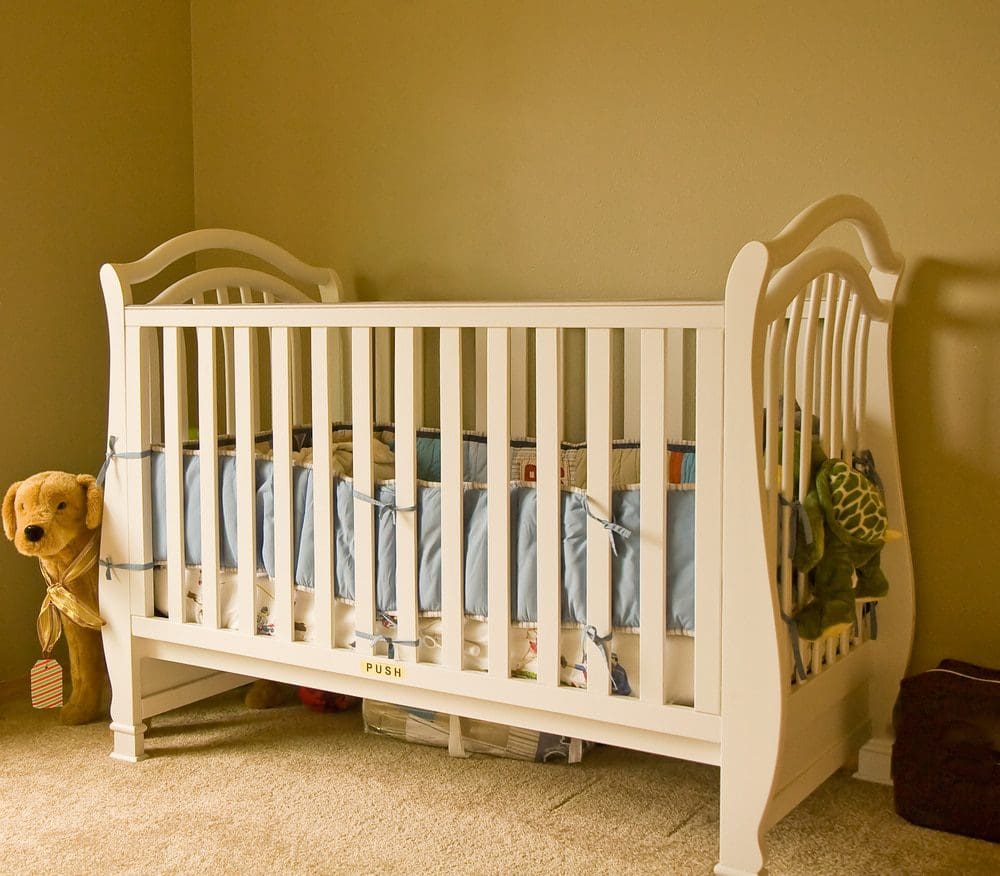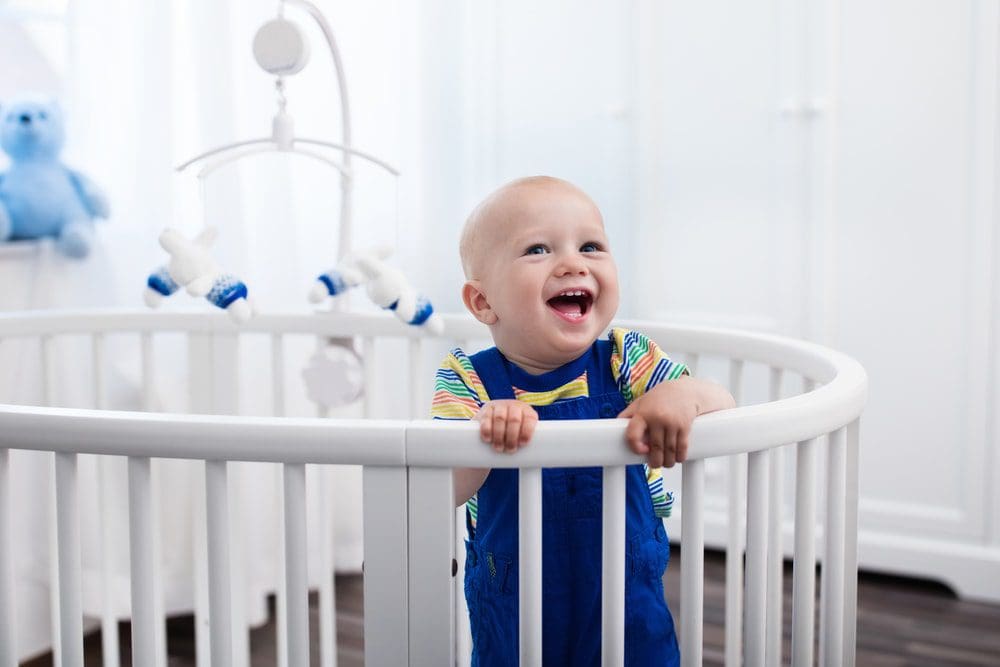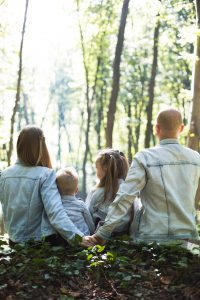Choosing the right baby crib and mattress is an important step for new parents. Your baby will spend a huge amount of time in their crib, often unsupervised and your babies safety is usually your biggest concern. When you leave your baby in their crib, natural curiosity and an exploratory nature takes hold. They pry at the crib’s bars, play with the crib bumper pads, pull at the mattress, and generally push the boundaries of this small environment. Because of this, you need to take all the steps necessary to ensure your crib is safe and you have a safe mattress. Your baby is special and they should have the safest environment possible.
I have also put together my top picks for best baby cribs and best baby mattresses to help you in your search.
We’re constantly learning new things about baby safety. In 2019, baby products are held to the highest standards, and parents are starting to learn which cribs to avoid, and which features present a potential health risk. It’s always a good idea to stay up-to-date on the latest news in crib safety and crib recalls, and even baby mattress recalls for that matter. Old safety information is now outdated, and parents need to be aware of the newest findings and recalls, which are constantly released to provide the safest products. You do not need to be considering cribs like the one below.

As long as you take all the safety concerns into consideration, you’ll have nothing to worry about as you pick the best crib and best mattress for your precious new baby. This guide should give you a complete rundown on the safest cribs and the crib mattresses in 2019, and which features to take into consideration as you pick the right option for your baby. The newest studies and data make the potential hazards and concerns adamantly clear. Take the time to educate yourself about these concerns. When you’re confident about your baby’s safety, both you and your child will get a good night’s sleep.
First off, let’s talk about some features that every safe crib needs to have. Without these features, certain hazards arise and your baby might be at risk.
Table of Contents
Things To Consider About Crib Safety
Among all crib features, bars have the notable potential for safety risks. How far apart should crib bars be? Bars should be no more than 2 ⅜ inches (6 centimeters) apart from each other. Any wider and the baby’s head might become lodged in the space between the bars. As a general rule of thumb, only two fingers should fit between the spaces between bars.
For the same reason, you should avoid cribs with cutout designs and spaces. While these might represent attractive decorations, the reality is that your baby’s head might become lodged in the spaces.
In addition, you should avoid cribs with corner posts. Flat corners are much safer, as clothing might become stuck/caught to corner posts, causing injury or worse.
If you want to make sure you are getting a quality crib that is the safest for your precious new baby, we have put together a comprehensive review of the 10 best baby cribs for you.
Things To Consider About Crib Mattress Safety
Only use mattresses designed for the matching crib frames. If possible, don’t buy crib frames and mattresses separately, as they might not work well together. Instead, purchase complete sets containing both the mattress and the crib. When lining up your crib frame with your mattress, examine the edges and the corners. Only two fingers should fit between the edge of the frame and mattress. Ideally, there should be zero space between the frame and mattress.
What is the standard crib mattress size?
The standard mattress size is 28” x 52” and should not exceed 6” thick. The minimum size should be 27 ¼” x 51 ⅝”. The minimum size is to ensure there are no excessive gaps between the mattress and crib frame that can pose a safety issue.
What Kind of Mattress Should You Buy?
A firm mattress is by far the safest choice. Soft mattresses sag under your baby’s weight, which could present a suffocation hazard. In fact, it’s best to keep all soft items out of the crib. Stuffed animals are additional suffocation hazards, as are pillows and other soft items. You should also keep loose items like blankets out of your crib.
Some of the safest cribs available give you the option to lower or raise the mattress level over time. This is a great way to prevent your baby from climbing and falling out of the crib, which is the leading cause of crib-related injuries.
With these adjustable cribs, you can start to lower the mattress height as your baby grows. This means that as your baby starts to stand and crawl, they’ll find it harder to reach the top of the crib and climb out. It’s a great way to adjust for the speedy growth of your baby. With that being said, the top of your crib rails should always be at least 26” higher than the top of the mattress, regardless of the size and age of the baby.
The safest baby mattresses are independently certified. All crib mattresses sold in America must adhere to standards established by the CPSC and the American Society For Testing and Materials. Different countries might have similar organizations and testing requirements.
When buying online, you should search for any mention of independent testing standards and certifications. Online items from foreign countries might not be required to undergo regulation of any kind or may have illegally bypassed them, so do not buy the cheapest mattress you can find. Your babies safety is much more important than $100.
For a more convenient mattress, you might want to choose those made from a water-resistant or repellent material. This helps maintain a clean and healthy environment for the baby. These mattresses are often covered with a laminated nylon. You might also choose to purchase a waterproof cover for your mattress, but you need to be very careful about potential safety hazards associated with mattress covers. Tight-fitting mattress covers are essential, and you need to make sure they don’t become loose in the crib.
Some parents might choose not to remove the plastic covering of the mattress when they first purchase it. While this might offer protection from damage, it’s extremely unsafe for the baby. Loose plastic packaging and sheeting is a notable suffocation hazard.
Please make sure to checkout our complete review of the 10 best crib mattresses.
Assembly is very important to Crib Safety
It’s also very important that your crib is properly assembled. Make sure all the nuts and bolts are tightened as much as possible and choose cribs with a reputation for sturdiness. You might want to choose cribs that are easy to assemble, without tons of different complex parts. This ensures a safe and sturdy crib, even if you’re not a construction expert. IT is likely that your local retailer actually provides a service for assembly. Just make sure to double check their work.
After assembling your crib, test your crib’s safety by shaking it from side to side and thumping down firmly on the mattress. You shouldn’t notice any wobbling or looseness, and the crib should feel firm and secure. You should run these tests fairly regularly, and not just immediately after construction. Nuts and bolts may become loose over time, so check them periodically.
Now that we know what to look for when choosing our cribs, let’s explore some of the potential hazardous features. These are things you’ll want to avoid when picking out your crib.
Hazards To Consider About Crib Rails
Drop rails are hazardous and you should avoid cribs that feature these rails. Drop-side cribs are also a safety concern, and they were banned in 2011 due to repeated deaths. If you find a crib with drop sides or rails on the market, avoid it completely.
Are Rail Bumpers Safe?
No, rail bumpers and rail padding accessories are unsafe. This includes padding that is designed for crib bars. Many parents choose these pads and bumpers to protect their babies from accidentally hitting themselves against the sides of the crib or even because they look super cute. But in reality, there’s no evidence that these products reduce injuries. In fact, it’s quite the opposite. These bumpers and pads actually increase the risk of suffocation, and you shouldn’t add them to your crib. You should also avoid sleep positioners, for the same reasons.
Do not use second-hand cribs or new cribs that were made decades ago. These cribs may not conform to the safety regulations and standards set forth by health organizations today. For the safest cribs possible, purchase models that have been released in the current year. These updated models should have all of the necessary safety features and none of the potential hazards we’ve identified in recent years. Modified cribs are also potential safety concerns.
You should avoid bedside sleepers. These special cribs are designed to be attached directly to the parents’ bed. The logic is that it’s easier to keep an eye on your baby when they’re right next to your bed. But in reality, some of these cribs models have been linked with infant deaths. While it’s actually recommended that you keep your crib in your bedroom, your crib shouldn’t be attached directly to your bed.
It might be tempting to build your own crib, but it’s best to rely on the professionals. No matter how hard we try, our own homemade cribs will never be subject to the same level of scrutiny as major brands. Brand name cribs go through rigorous testing and research to provide the safest options possible. Even if “Grandpa” seems confident in his woodworking abilities, you should probably choose a crib that has been approved by a major testing organization.
Never tie or harness your baby to a crib. While this might seem like a good way to ensure they don’t fall out, harnesses and cords actually present a strangulation and suffocation risk. The same goes for pacifiers on long cords. No ropes, strings, bungees, or elastics belong in your baby’s crib.
Where To Place Your Baby’s Crib
While choosing the right crib is important, placement is also a key part of providing the safest location for your baby. Never place a crib near windows, especially if there are blinds cords dangling below. On that same note, avoid placing your crib near curtains or any kind of material that drapes down. These are all strangulation and suffocation risks.
Windows might also make your baby uncomfortable due to cold drafts or direct sunlight. It’s better to place cribs in areas where you can control the environment. While sunlight can cause the baby to overheat, radiators also pose the same risk. Never place cribs too close to radiators, heaters, or any other heat source.
Placing cribs too close to large furniture also poses a risk, as babies might climb out of the crib and onto this furniture. Because babies can potentially reach dangerous heights in this manner, the risk of injury becomes much greater than if they had simply fallen out of their crib.
Many parents choose to place baby monitors near their cribs. While this is definitely a great idea, you need to be wary of dangling cords and wires. If these cords and wires get too close to the crib, they represent a strangulation hazard.
Consider the Crib Paint
Even the paint on your crib can pose a health risk. Make sure that your cribs are painted with lead-free paint, as babies will chew and gnaw on crib bars and posts. Lead paint might cause lead poisoning in this way, and this is a serious health concern. Most newer cribs use lead-free paint, but always double check just to be sure. The highest risk is purchasing a cheap online knock off from a foreign country where no one is monitoring the business and you really have no good legal recourse. You want the safest crib for your precious one.
Are Crib Mobiles Safe?
Yes, they can be, but they do pose safety risks. Mobiles and activity gyms are neat touches for your baby’s crib, and these hanging toys help keep your baby occupied and soothed when they’re left alone. Mobiles might even help your baby fall asleep at night, but if you don’t hang these mobiles properly, they could also pose a safety risk.
As soon as your baby can push up on their hands and knees, remove the mobile entirely. If your child still isn’t pushing up on their knees at 5 months, remove the mobile anyway. Mobiles can pose a serious strangulation risk if babies can reach them, and it’s best to keep them out of cribs after 5 months.
When To Move Your Child Out Of The Crib
When your child is approximately three years old, it’s time for them to move out of the crib and into a proper bed. If your child reaches a height of about 35 inches before turning three, you need to move them to a bed beforehand.
Personally, I have always like the convertible cribs that change to more of a baby bed when the crib is no longer necessary. It is super convenient and is smaller than a traditional bed, so it saves a little space in their room for a while.
Baby Crib and Mattress Safety Final Thoughts
While a lot of these safety lessons are based around common sense, others might surprise you. For example, it might seem counterintuitive to remove padding and bumpers from your cribs. But what appears to be helpful might actually be harmful, and plenty of parents have learned this lesson the hard way. Learning from past experiences and tragedies is the only way we truly know what’s safe and what isn’t.
Researching crib safety is an essential part of parenthood, and you should plan out your crib strategy long before you have your child. As long as you take all of these factors into account, your baby will be safe and sound every single night.
Please do the right thing for your sweet baby and do not become a statistic to save a few bucks or so that they have a super cute crib to sleep in. It is not worth it.
Sources:
- https://www.cpsc.gov/Recalls
- https://www.healthychildren.org/English/ages-stages/prenatal/decisions-to-make/Pages/Choosing-a-Crib.aspx
- https://blog.providence.org/archive/baby-safe-avoiding-crib-dangers
- https://www.healthlinkbc.ca/health-topics/ue5195spec
- https://www.thespruce.com/choosing-a-crib-mattress-dos-and-donts-2504893
Featured Photo by Pixabay from Pexels




